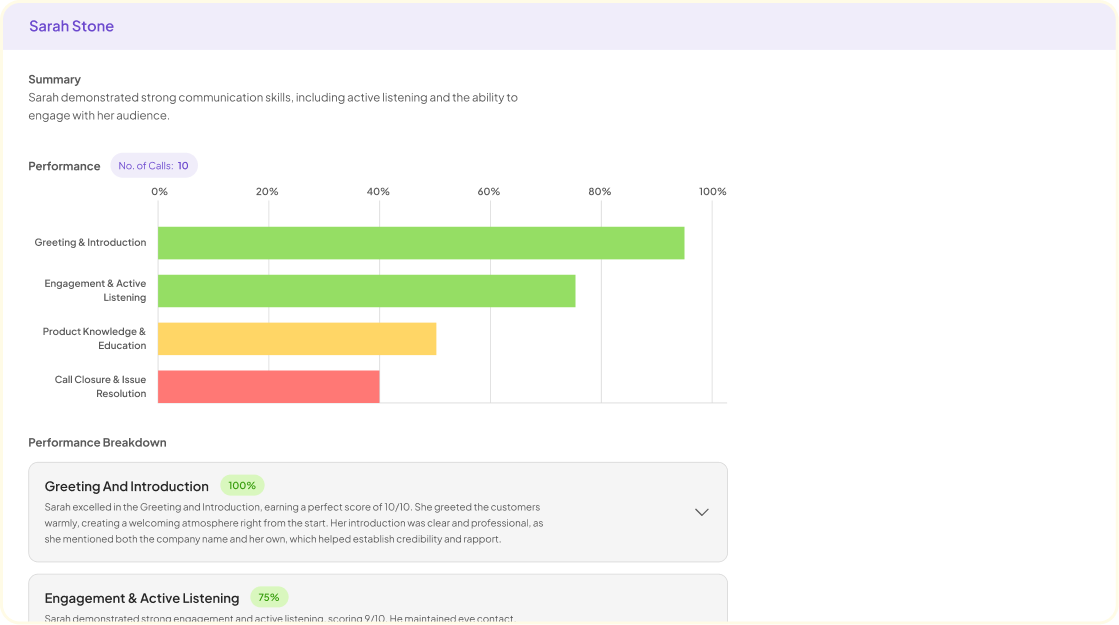AI Lecture Tools have emerged as transformative resources for educators and students alike. Imagine a classroom where lectures are seamlessly captured, analyzed, and summarized. These tools not only enhance learning but also make information retrieval more efficient and engaging. Students can revisit key highlights from their lectures, ensuring deeper comprehension and retention of vital concepts.
Moreover, AI Lecture Tools offer valuable insights into the effectiveness of instructional methods. By identifying recurring themes and key discussion points, educators can refine their teaching strategies. This continuous feedback loop fosters an adaptive learning environment that caters to the needs of diverse learners. Embracing these innovative technologies can significantly elevate the educational experience, making learning more interactive and impactful.
The Evolution of Lecture Transcript AI Tools
AI Lecture Tools have undergone significant advancements since their inception, evolving from basic transcription software into sophisticated systems that enhance learning experiences. Initially, these tools focused on simple transcriptions, enabling students to access spoken content in written form. As technology progressed, features such as real-time transcription and audio indexing emerged, greatly improving functionality and accessibility.
The next phase saw AI tools integrating advanced features like keyword extraction and sentiment analysis. This allowed users to identify key topics and understand the emotional tone of lectures. Moreover, recent developments introduced machine learning algorithms that continually adapt, providing tailored recommendations based on user interactions. Today’s AI Lecture Tools not only enhance the learning process by making content more accessible but also empower educators with valuable insights, contributing to an enriched educational experience. This remarkable evolution underscores the transformative potential of AI in academia.
Transforming Traditional Note-Taking with AI Lecture Tools
Traditional note-taking can be a cumbersome task, often challenging to maintain accuracy and detail. However, AI lecture tools are revolutionizing this process, making it more efficient and comprehensive. These tools can automatically transcribe lectures, capturing key points while allowing students to focus on understanding the material rather than hurriedly scribbling notes.
One significant advantage of using AI lecture tools is their ability to organize and summarize large volumes of information. Students can access full transcripts, enabling them to review specific topics at their convenience. Moreover, these tools can highlight key insights, facilitating better retention of information. The integration of AI into lecture notes not only improves accessibility but also ensures that no critical information is overlooked, transforming the educational experience for learners and educators alike.
How AI Lecture Tools Enhance Educational Accessibility
AI Lecture Tools play a crucial role in enhancing educational accessibility, making learning more inclusive for all students. These tools facilitate the transcription of lectures, enabling students with hearing impairments or differing learning styles to access the same content as their peers. By providing accurate transcripts, these tools ensure that no student is left behind, fostering an environment where everyone can engage and participate fully in their education.
Additionally, AI Lecture Tools improve comprehension by offering features such as searchable transcripts and keyword highlights. This functionality allows students to quickly find relevant information, aiding in effective studying and revision. Moreover, the adaptability of these tools means they can be tailored to various educational contexts, ensuring that diverse learning needs are met. Ultimately, AI Lecture Tools represent a significant step towards creating equitable educational opportunities, allowing all learners to thrive.
💬 Ask About This Article
Have questions? Get instant answers about this article.
Key Features of AI Lecture Tools
AI Lecture Tools offer a range of features that enhance the lecture experience for both educators and students. One prominent aspect is real-time transcription, which ensures accurate capture of spoken content. This allows students to focus on understanding the lecture instead of frantically taking notes. Clarity in transcripts is critical, and many tools now utilize advanced algorithms to refine the text, highlight key points, and even provide summaries of the discussions.
Another significant feature is the ability to analyze dialogue patterns and themes throughout a lecture. By doing so, educators can gain insights into student engagement and understand which topics resonate most. Furthermore, AI tools often include easy export options, enabling users to generate reports or share information seamlessly. This capability is key for collaborative learning, ensuring that all participants have access to vital lecture content in a user-friendly manner.
Speech-to-Text Capabilities in AI Lecture Tools
AI Lecture Tools increasingly utilize sophisticated speech-to-text capabilities, transforming auditory information into easily accessible written transcripts. These tools capture spoken language during lectures, allowing students and educators to focus on content delivery rather than manual note-taking. As a result, participants can engage more meaningfully with the material presented.
The effectiveness of speech-to-text technology in AI Lecture Tools relies on its ability to accurately transcribe dialogue while minimizing errors. Advanced algorithms utilize natural language processing, enabling tools to distinguish between various speakers and understand context nuances. This means discussions can be recorded in real time, creating a comprehensive transcript that enhances learning. Furthermore, these transcripts can be analyzed for key insights, revealing recurring themes and participant interactions that enrich the educational experience. The seamless integration of speech-to-text functionality ultimately supports diverse learning styles and fosters a more interactive and inclusive classroom environment.
Integration with Learning Management Systems via AI Lecture Tools
Integrating AI Lecture Tools with Learning Management Systems (LMS) creates a streamlined approach to education. By connecting these advanced tools, educators can effortlessly manage and deliver lecture transcripts alongside their teaching materials. This integration simplifies access for students, enabling them to engage with lectures actively and reference transcripts when needed.
The benefits of this integration include the enhancement of learning experiences and improved retention rates. Students can revisit previously discussed topics, aiding in clearer understanding and better performance. Additionally, AI Lecture Tools can provide personalized insights and analytics. These analytics can help educators identify trends in student learning, allowing them to tailor their teaching methods effectively. Overall, integrating AI Lecture Tools with LMS promotes a more engaging and responsive learning environment, ultimately benefiting both students and educators alike.
Conclusion: The Future of AI Lecture Tools in Education
AI Lecture Tools have the potential to revolutionize educational environments. As these tools evolve, they will not only enhance lecture transcripts but also improve accessibility and engagement for diverse learning styles. Imagine a classroom where students can interact with AI-driven summaries during lessons, reinforcing their understanding of complex topics.
In the future, AI Lecture Tools might provide personalized feedback, adapting to individual needs and pacing. Educators will have more time to focus on teaching and fostering critical thinking skills, as AI efficiently manages data analysis and content summarization. This synergy between technology and teaching practices will ultimately create a more inclusive and effective learning experience for everyone involved.
💬 Ask About This Article
Have questions? Get instant answers about this article.


